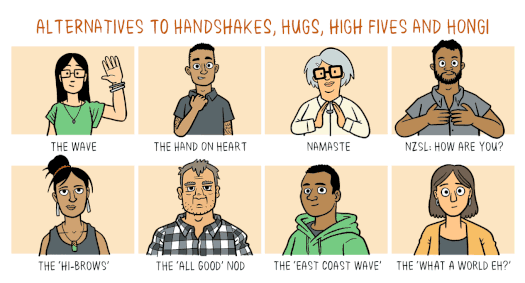Fearing the Coronavirus (Covid -19) spread, we’ve all been advised to practice social distancing. Considering the monumental population of our country, it has been strongly recommended to practice all cautions necessary. At the end of the day, we are all in this together. If we want to survive, we’ll literally have to take responsibility and take any and all precautionary measures. We, Indians, simply cannot afford to let Covid -19 spread! The resulting infection would be catastrophic!

Memes apart, social distancing is an important precaution, which, unfortunately, we, as a community are taking far too lightly. Self-imposed quarantines are not equivalent to a vacation. While you shouldn’t certainly stop living your lives, we shouldn’t have parties, get-togethers, or sleepovers, either.
Even though every country has a slightly different policy when it comes to social distancing, the general principles are similar. With this post, let me try and explain, what social distancing is (in layman's terms), how you need to practice it, and other dos and not’s, as we collectively fight the spread of Covid -19.
Social distancing is, essentially, a precautionary action implemented to stop or slow the spread of infectious diseases. It literally means less contact between you and other people.
By imposing social distancing we’re trying to reduce the probability of contact between an infected person, and others who are not infected, to minimize Covid – 19 transmission, and the plethora of complications it brings with itself.

We already know, COVID-19 is most likely to spread from person to person through
#1 Direct close contact with an infected person or contact within 24 hours before their symptoms appeared,
#2 Close contact with an infected person who coughs or sneezes, or
#3 Touching objects or surfaces (such as door handles or mobile phones) contaminated by a cough or sneeze from an infected person, and then touching your mouth or face.
So, the more space there is between you and others, the harder it is for the virus to spread.
While social distancing may lead to loneliness, reduced productivity, and the loss of other benefits associated with human interaction; it is, still the need of the hour! This is why social distancing can be practiced within your respective families themselves.

There is a clear difference between self-isolation and social distancing.
Self-isolation is what symptomatic people with a possible Covid – 19 infections have to do, or if they have been in close contact with someone who might be infected. Self-isolation is usually reserved for those likely to be infected, to stop the disease from spreading a chain reaction.
Self-isolation is much more stringent than other social distancing practices; which include working (or studying) from home; not traveling; not having any visitors; not leaving the house, unless in a medical emergency; not sharing a bed, and not sharing household items like towels, utensils, and mobile phones.
While social distancing is usually an ongoing practice over a long period of time, self-isolation is usually for a set period of time. For Covid – 19, a minimum14 day self-isolation period is recommended.
How to practice Social Distancing at home?
#1 Practice good hand and sneeze/cough hygiene (cough/sneeze into your elbow, if a tissue is not available).
#2 Avoid handshaking, kissing, and all sexual activities
#3 Regularly disinfect surfaces like tables, doorknobs, utensils, electronic gadgets, etc.
#4 Increase ventilation by opening windows or using air purifiers
#5 Drastically reduce local shopping and buy more goods and services online
#6 Travel only when absolutely necessary, restrict holidays and get-togethers

How to practice Social Distancing at home where people are ill? (in addition to the measures above)
#1 Take care of the sick person(s) in a single room if possible
#2 Keep the number of carers (for the sick) to a minimum
#3 Try either opening windows in the sick person’s room or using an air purifier, but keep the door closed.
#4 Both the sick person(s) and the carers should wear a mask
#5 Protect other vulnerable family members, especially people over 65 years or people with a chronic illness.
How to practice Social Distancing at the workplace (the concept of work-from-home)?
#1 Work from home, if your employer allows.
#2 Stop using handshakes as a greeting
#3 Switch to meetings via video conferencing or phone calls
#4 Practice good hand and sneeze/cough hygiene (cough/sneeze into your elbow, if a tissue is not available).
#5 Provide/use hand sanitizers for all staff and workers
#6 Eat lunch at your desk rather than in the lunchroom. Limit food handling and sharing of food
#7 Regularly clean and disinfect surfaces that have high touch potential like files, stationery, copy machines, etc.
#8 Open windows and adjust air conditioning for more ventilation; use air purifiers if possible.
#9 Reconsider non-essential business travel, travel only when absolutely necessary
How to practice Social Distancing in public?
#1 Sanitize your hands wherever possible, including while entering and leaving buildings
#2 Use tap and pay apps like PayTm, GooglePay, Amazon Pay, etc rather than handling money
#3 Try traveling at quiet times to avoid crowds
#4 While using public transport like taxis, autos, and buses, keep vehicle windows open where possible
#5 Limit traveling in the metro, and if you must, make sure to stand at least 1 meter apart from fellow passengers or while sitting, keep alternate seats empty.

No one can predict when the danger will pass, but we can do everything necessary to try and keep the community/country safe.


No comments:
Post a Comment